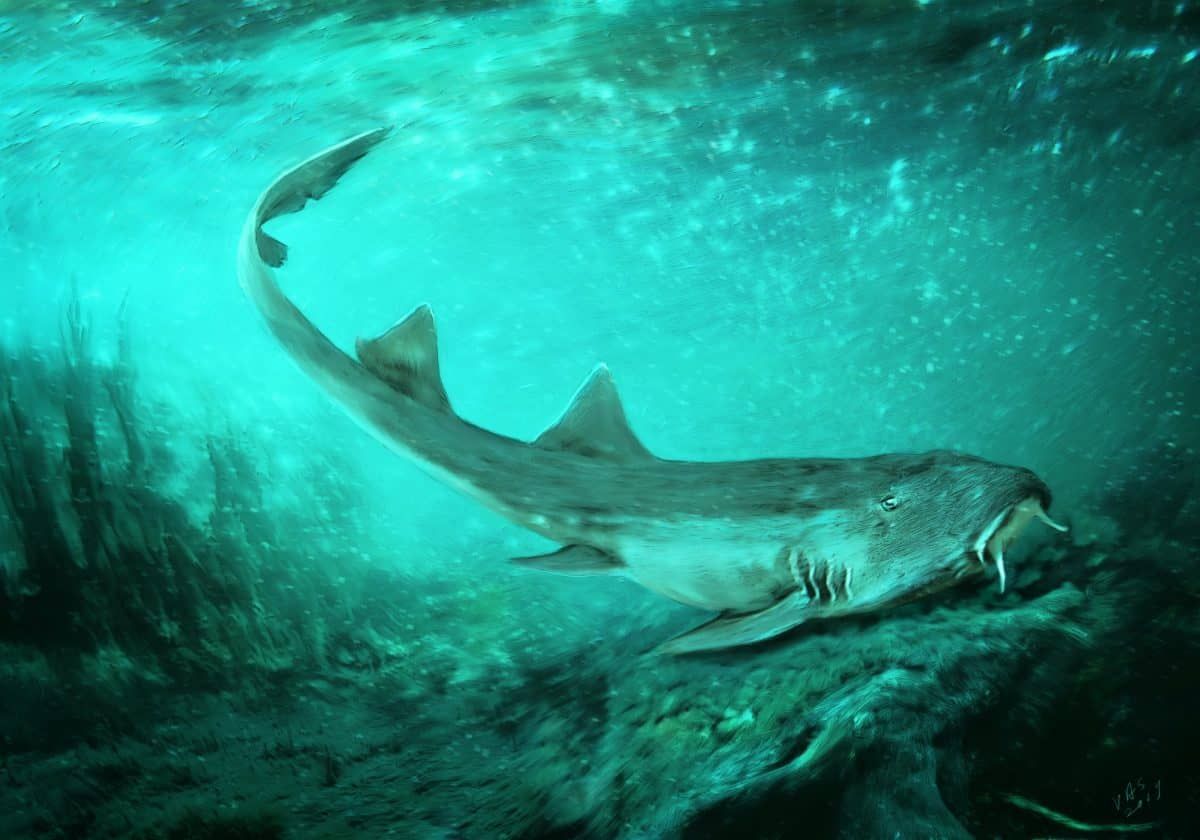A prehistoric shark that swam up rivers where T-Rex was drinking has been discovered in the US.
The Galagadon shark was named after the 1980s arcade game Galaga, as the teeth have the same stepped triangle shape as the mini spaceships in the game.
Its teeth were found embedded in a rock removed from a T. rex skeleton in South Dakota nearly 30 years ago.
It had been sitting in storage until paleontologists decided to have a look at what else had been found next to the giant predator.
The shark would have grown to less than two feet long and had teeth just a millimetre wide – the same size as the head of a pin.
A team, led by North Carolina State University’s Terry Gates, sifted through the rocks and discovered the shark’s miniature teeth.
They believe it may have lived in the same river as a T. rex, dubbed Sue, would have drank from.
Sue is the nickname given to the largest, most extensive and best preserved Tyrannosaurus rex specimen ever found.
It was discovered in August 1990, by Sue Hendrickson, an explorer and fossil collector, and was named after her.
Galagadon’s closest modern relative is a type of carpet shark called a ‘bamboo shark’.
And scientists believe it would have had a flat face and been camouflage-coloured to help it hide on the riverbed.
The shark’s full name is Galagadon nordquistae, a nod to its teeth and to Karen Nordquist, the Field Museum volunteer who discovered the fossils.
Retired chemist Ms Nordquist said: “It was so tiny, you could miss it if you weren’t looking really carefully.
“To the naked eye, it just looks like a little bump, you have to have a microscope to get a good view of it.
“Most people, when they think of fossils, think of big huge dinosaur bones, but in the dirt, there are the bones of tiny animals.
“When you get those bones and identify them, you get an idea of the whole environment–everything that lived with the big dinosaurs.”
Pete Makovicky, curator at Field Museum and lead author of the Journal of Paleontology study, said: “This shark lived at the same time as Sue the T. rex, it was part of the same world.
“Most of its body wasn’t preserved, because sharks’ skeletons are made of cartilage, but we were able to find its tiny fossilized teeth.
“Galagadon was less than two feet long–it’s not exactly Jaws.
“It’s comparable to bamboo sharks living today. It probably had a flat face and was very likely camouflage-coloured, since its relatives today have a camouflage pattern.
“It would have eaten small invertebrates and probably spent a fair amount of time lying on the bottom of the riverbed.”
“We had always thought of the Sue locality as being by a lake formed from a partially dried-up river – the presence of this shark suggests there must have been at least some connection to marine environments.
“This wasn’t some Sharknado event – these animals were making their way up rivers from the sea.”

Eric Gorscak, research associate at the museum and co-author, said: “Today, carpet sharks, which include bamboo sharks and wobbegongs, mostly live in the waters in southeast Asia and Australia, so it’s surprising to find their fossils at the Sue locality.
“During the Late Cretaceous the continents continued to drift apart, further isolating dinosaurs and other land animals, and at the same time created the Atlantic and Indian oceans.
“With occasional seaways connecting these young oceans, we have found fossils of marine life flourishing globally, including Galagadon and its relatives.”
Terry Gates, lecturer at North Carolina State University and lead author said: “Every species in an ecosystem plays a supporting role, keeping the whole network together.
“There is no way for us to understand what changed in the ecosystem during the time of the mass extinction at the end of the Cretaceous without knowing all the wonderful species that existed before.”
By Adela Whittingham

